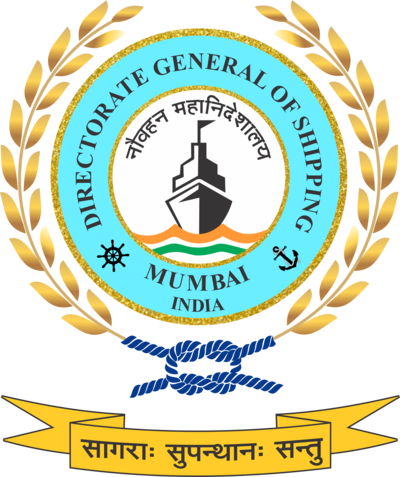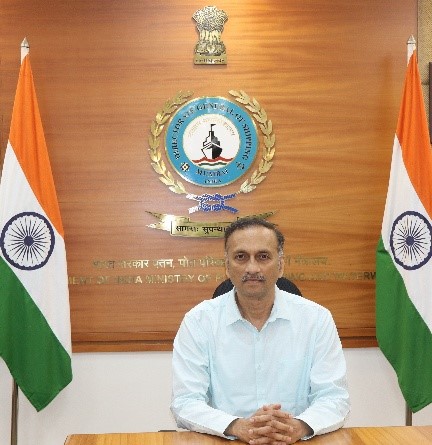Maritime Training Heritage
The Directorate General of Shipping, an attached office of the Ministry of Ports, Shipping and Waterways in New Delhi, was established under Section 7 of the Merchant Shipping Act of 1958.
1.1 "Indian shipping had to perish so that British shipping might flourish." - Mahatma Gandhi. India is traditionally a maritime nation and has a rich maritime heritage. History documents that India had trade links with other nations of the world from the times of the Harappan civilization. India's maritime history precedes the birth of Western civilization. The world's first tidal dock is believed to have been built at Lothal around 2300 BC during the Harappan civilization, near the present-day Mangrol harbor on the Gujarat coast. The Rig Veda, written around 2000 BC, credits Varuna with knowledge of the ocean routes commonly used by ships and describes naval expeditions using hundred-oared ships to subdue other kingdoms. The maritime tradition of India is as old as our civilization and as vast as the Indian Ocean.
1.2 The first Indian-owned vessel, S.S. Loyalty, owned by M/s. Scindia Steam Navigation Co., sailed out of Bombay Harbour on 5th April 1919 for London, with the Master and the other officers being British.
1.3 R.I.M.S. Dufferin was acquired by the Department of Commerce and converted into a training ship. In December 1927, the first batch of 50 nautical cadets joined the I.M.M.T.S. Dufferin. In 1935, training for engineering cadets also commenced on the Dufferin. Each year, 25 nautical cadets and 25 engineering cadets were admitted.
1.4 In 1949, the training of Marine Engineers was transferred ashore to a new engineering college in Calcutta, known as Directorate of Marine Engineering Training (D.M.E.T), which also had a branch in Bombay. The ship, named T.S. Rajendra, was received from the builders by Mrs. Indira Gandhi, the Prime Minister of India, on April 2, 1972. In April 1972, the Dufferin was decommissioned.
1.5 The training shifted to a shore-based academy named T.S. 'Chanakya' in 1993. T.S. Rajendra's affiliation with the University of Bombay was also transferred to T.S. 'Chanakya' in 1993. The Marine Engineering & Research Institute is located in Calcutta and has a branch in Mumbai.
1.6 The Nautical and Engineering College was established in October 1948 to support merchant navy officers from the Navigation and Engineering departments in obtaining their certificates of competency after their sea service. Initially, the institution was located in temporary buildings at Azad Maidan, opposite V.T. Station in Bombay. In 1966, the college relocated to its current site at Hay Bunder. On June 8, 1967, the institution was renamed Lal Bahadur Shastri Nautical and Engineering College, and on February 11, 1994, its name was further upgraded to LBS College of Advanced Maritime Studies and Research.
1.7 After gaining independence, a National Shipping Policy was formulated. Subsequently, to ensure an adequate supply of trained manpower for the expanding Indian Merchant Shipping Fleet, a Merchant Navy Training Committee was established in 1947 to consider all its related problems. As per their recommendations, three pre-sea training institutions for ratings were established: T.S. Bhadra in Calcutta in 1950, T.S. Mekhla in Visakhapatnam in 1951, and T.S. Naulakshi in Navalakhi in 1955. In October 1991, the government set up a committee called the Committee on Marine Education and Training (COMET) to study the existing training institutions for Merchant Navy Officers and Ratings in India and to make appropriate recommendations for the future. The committee submitted its report to the government in May 1992. According to the Praveen Singh Committee report, which was accepted by the government, it has been decided to relax the restrictions on the training of seamen (ratings). Sponsorship by shipping companies will no longer be necessary for otherwise eligible candidates to enroll in government-approved training institutes.
1.8 For the further strengthening of the institutional framework for imparting maritime training in India, the government decided to establish a society known as the Indian Institute of Maritime Studies (IIMS) on June 6, 2002. This initiative placed four government-run maritime institutions under the domain of this society. Additionally, the government established the National Institute of Port Management, now renamed the National Maritime Academy in Chennai, and the Indian Institute of Port Management in Kolkata, both registered as societies aimed at enhancing the capacity of personnel in the port and shipping industry.
1.9 To promote private sector participation in maritime training, the Government of India introduced liberalized guidelines in 1997. As a result, approximately 125 training institutes came up in both the government and private sectors, offering both pre-sea and post-sea training. The Directorate General of Shipping in Mumbai granted recognition to these private institutes. In 1991, the Committee on Maritime Education and Training, established by the Government, recommended the establishment of an autonomous body under an Act of Parliament, designated as the Indian Maritime University (IMU). This body is responsible for managing, controlling, supervising, directing, and monitoring the maritime training institutions currently running under Government control.
1.10 After an arduous effort, an Act was passed in Parliament on 12th November 12, 2008, to establish the Indian Maritime University (IMU), with its headquarters in Chennai and regional campuses in Chennai, Mumbai, Kolkata, and Visakhapatnam. The university is designed to function as both a teaching and affiliating institution. It will play a vital role in developing and offering a wide range of educational programs leading to the award of undergraduate degrees, postgraduate degrees, and Ph.D. qualifications in various disciplines related to the maritime industry. Thus, the Indian Maritime University, established through an Act of Parliament (Act 22) in November 2008 as a Central University, is well-positioned to contribute significantly to the development of a skilled workforce for the maritime sector.



























































